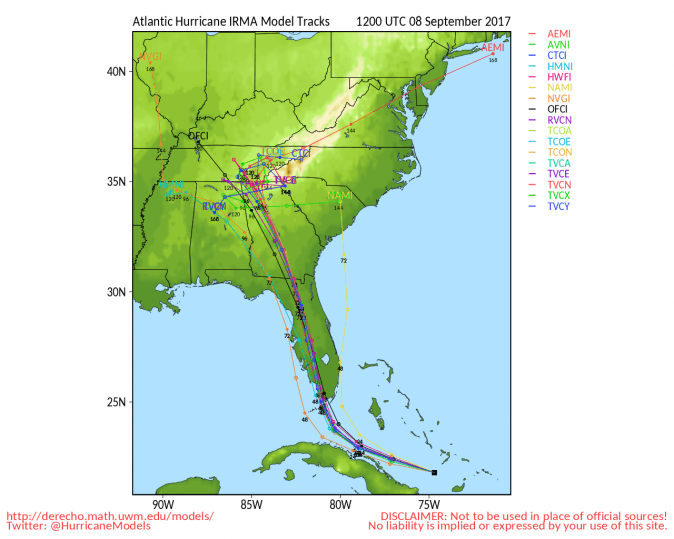Hurricane Irma, about to hit Florida on Saturday, Sept. 9, is forecast to reach south Tennessee, as it loses strength and becomes a tropical depression, according to Friday morning weather models from the University of Wisconsin.

University of Wisconsin models of Hurricane Irma's possible path as of Sept. 8, 2017, 8 a.m. EST. University of Wisconsin





